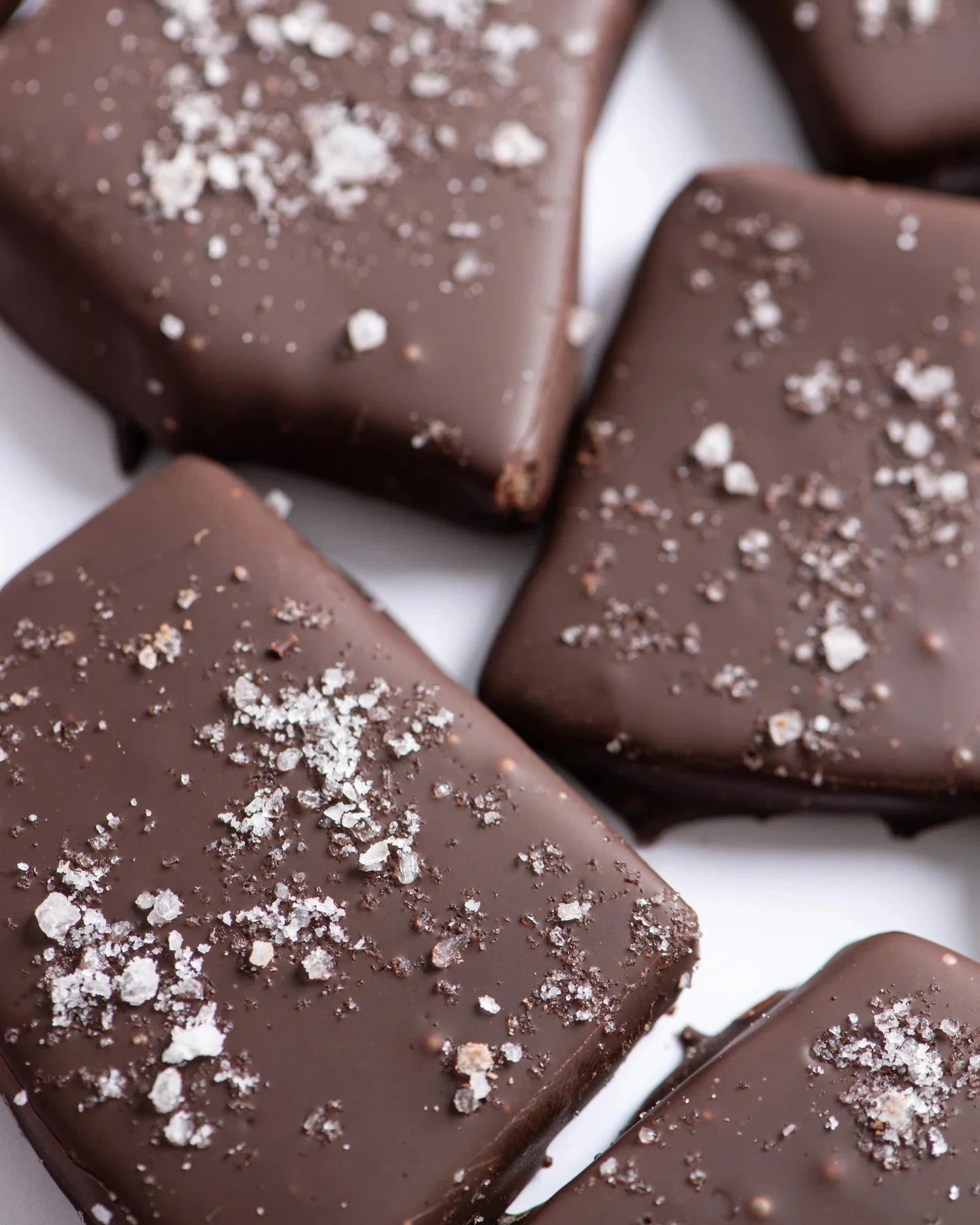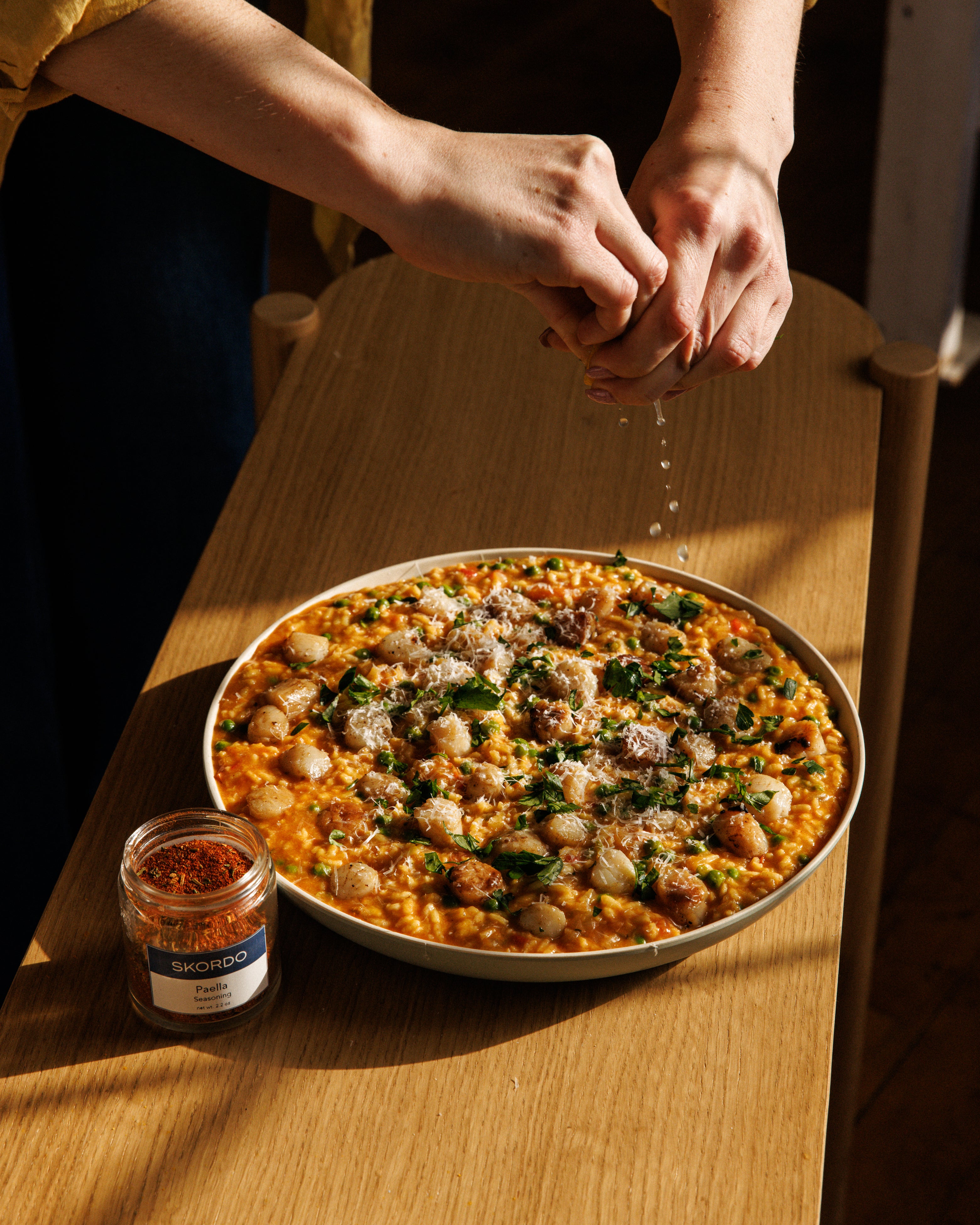Rarely do we get the chance to dive into the origin, stories and reasoning behind our blends. This month we're continuing our ingredient tour with a reflection on iconic blends from world cuisine. Each is rich with flavor, bursting with versatilely and packed with history. Join us on a quick trip around the globe.
Europe
Quatre Epices
France and North Africa
Our ingredients:
White Peppercorns, Allspice, Nutmeg, Cinnamon, Ginger, Cloves
Uses:
Soup, ragout, slow cooked roasts and vegetables.
History:
This is considered the quintessential French allspice. Typically built of four ingredients, early variations were made with equal parts white pepper, ginger, cloves and nutmeg. The blend was an alternative to Allspice and wove its way into the heart of French cuisine with features in sweet and savory dishes. Today, versions are found throughout the Middle East.
North Africa
North Africa especially Morocco
Our ingredients:
Mace, Cardamom, Ginger, Turmeric, Cinnamon, Allspice, Nutmeg, Coriander, White Pepper, Cayenne Pepper, Anise, Black Pepper, Cloves
Uses:
A rub on meats, flavoring tagines and stews.
History:
Every spice merchant in Morocco had their own version of Ras el Hanout. In Arabic, the name translates to ‘head of the shop’. Think of it as a blend of the best ingredients in a merchant’s collection. Often Ras el Hanout consisted of 30+ ingredients and tailored versions were made for loyal customers or prestigious homes.
China + Southeast Asia
China, Taiwan and Vietnam
Our ingredients:
Szechuan Pepper, Fennel, Cinnamon, Star Anise, Cloves
Uses:
Braises for roasted poultry, fish, meat or baking. This blend incorporates all of the five flavor profiles: salty, sour, bitter, pungent, and sweet.
History:
This blend may have a medicinal origin. In Chinese yin and yang, the number 5 is associated with healing. The combination of warm (yang) and cool (yin) flavor in the blends’ 5 ingredients may have been use to bring that same balance to diners. The balance of sweet, savory, sour, bitter, and salty has earned Chinese Five Spice a key role in Asian cuisine.
India
Eastern India and Bangladesh
Our ingredients:
Brown Mustard Seeds, Nigella, Cumin, Fennel, Fenugreek
Uses:
Roasted whole in oil or ghee before using in curries, dals, pickles, roasted vegetables and in naan. This blend establishes the base aromatics and flavor profile for many iconic Indian dishes.
Fun Fact:
Panch Phoron is never ground! The ingredients are all seeds and left whole for added texture and flavor. This is a staple ingredient for home kitchens throughout Eastern India
The Caribbean and Latin America
Puerto Rico & Cuba
Our ingredients:
Salt, Sweet Paprika, Onion, Black Pepper, Cumin, Garlic, Chile Powder, Mexican Oregano
Uses:
Seasoning on seafood and meat before grilling, roasting or frying. Adobo variants are common throughout the world and especially celebrated in Latin cuisine. Mexico, Peru and Uruguay all have their own versions. The Philippines also has an adobo, but it’s ingredients are different from the Latin American version.
History:
Adobo was first used as a way to preserve food. The blends high salt content would stabilize meat with the help of paprika. Capsaicins in the paprika melted away fats while the ingredient’s antibacterial properties further assisted safe preservation. With access to refrigeration came a shift in household use of adobo and the blend as we know it today was created!
North America
Mid-Atlantic, New England and Gulf Coast
Our ingredients:
Salt, Celery Seed, Allspice, Cloves, Mustard Powder, Red Pepper Flakes, Sweet Paprika, Black Pepper, Ginger, Cardamom, Cinnamon, Bay Leaves
Our Chesapeake Bay Seasoning is inspired by Old Bay Seasoning, one of the most recognized spice blend in the United States.
Uses:
Crab cakes, popcorn, fried chicken, Bloody Mary's, baked fish
History:
In 1937 a Jewish-German immigrant named Gustav Brunn founded the Baltimore Spice Company. Brunn had worked as a spice merchant in Germany prior to immigrating and briefly worked for McCormick before starting his own business in Maryland with ‘Delicious Brand Shrimp and Crab Seasoning’ as his signature item. The blend was later renamed for the Old Bay Line, a passenger line that ran in the Chesapeake Bay. In 1990 McCormick purchased the rights to the seasoning.










